The Double Slit Experiment
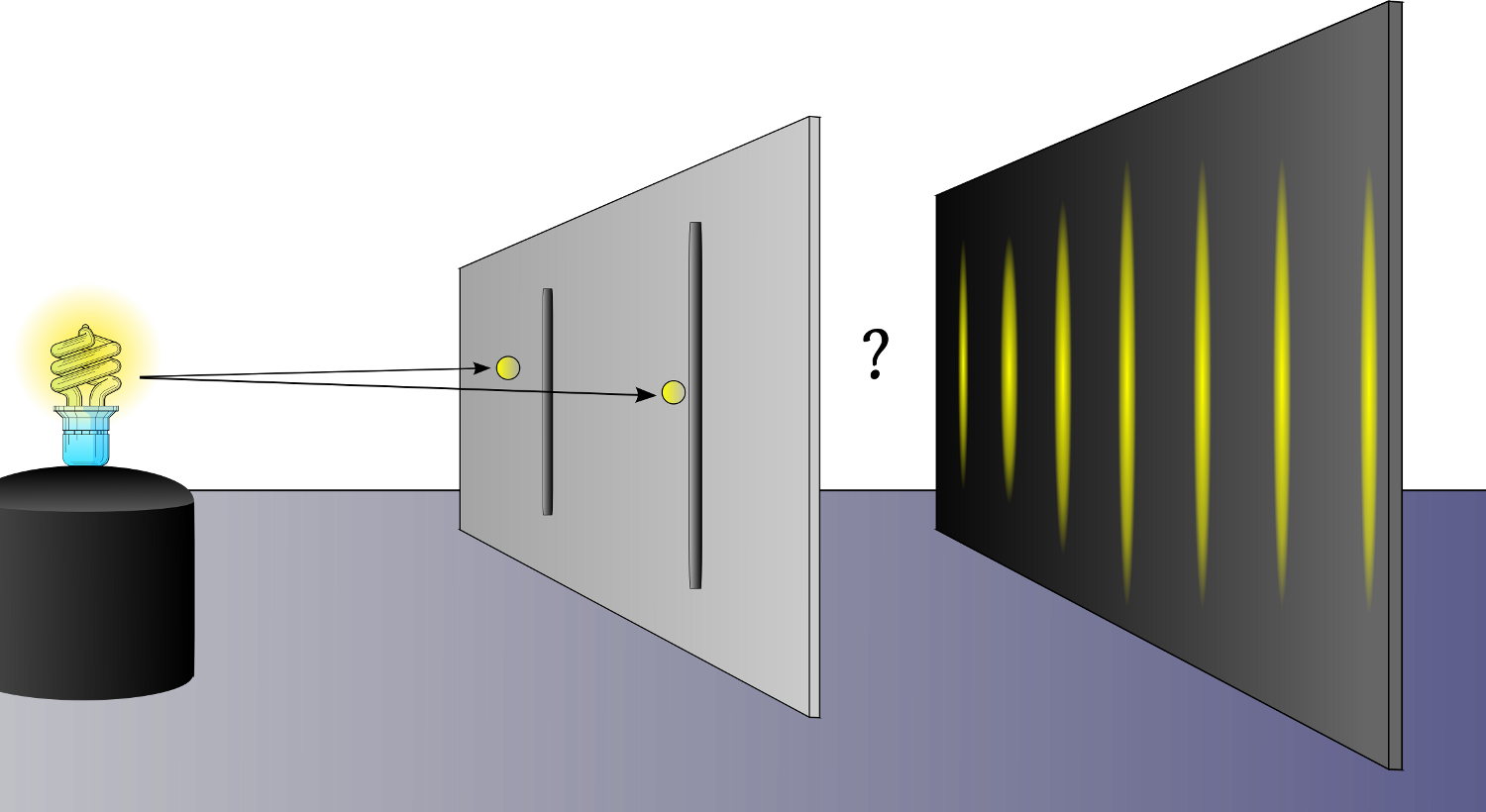
Imagine shining a flashlight at a wall with two narrow vertical slits in it. Behind that wall is a second wall that acts like a screen to catch the light. What would you expect to see? I imagine it would be something like this...
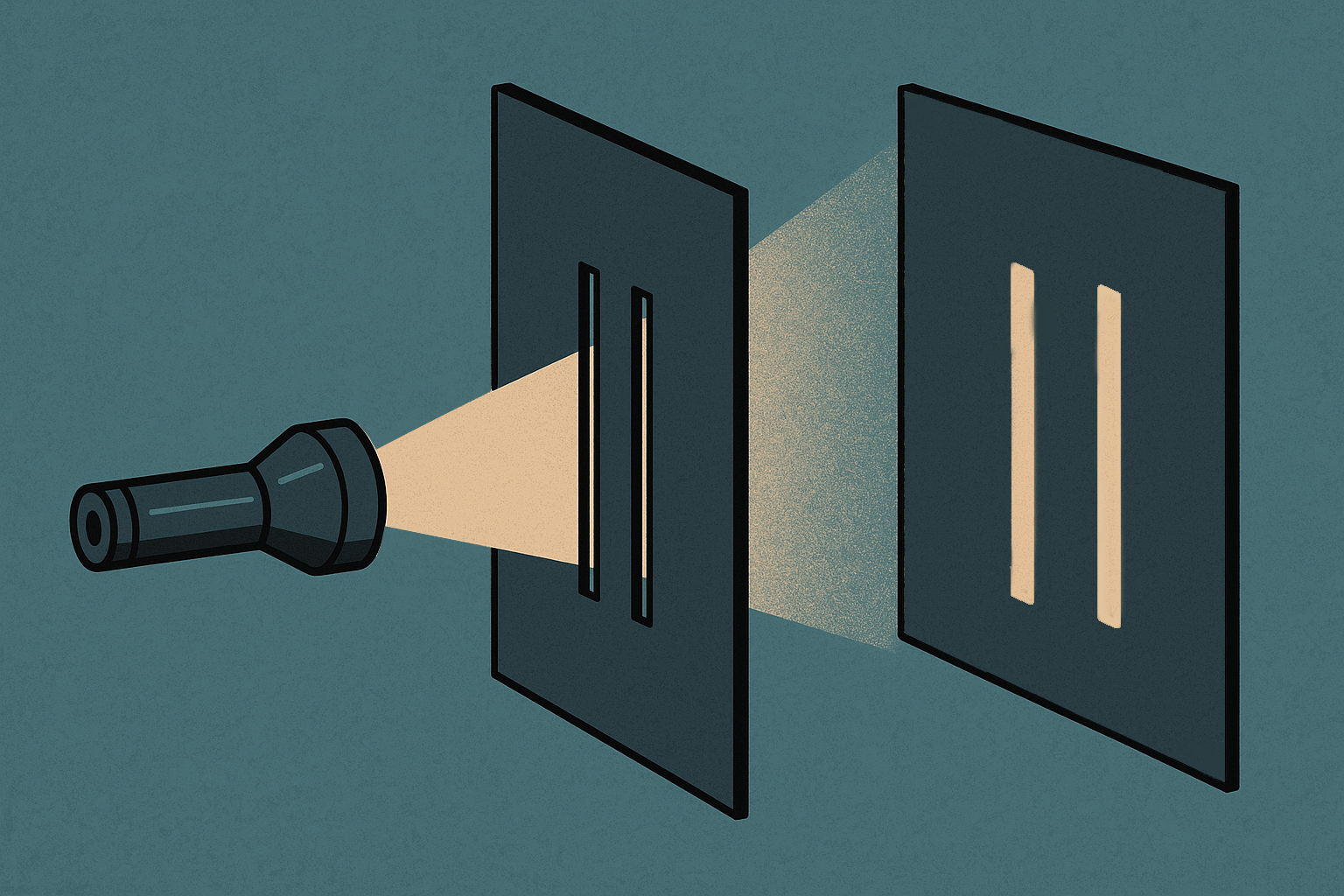
The light would pass through both slits creating two rectangles on the second wall. We expect this but that's not what we see when we do this experiment. What we actually see is something like this...
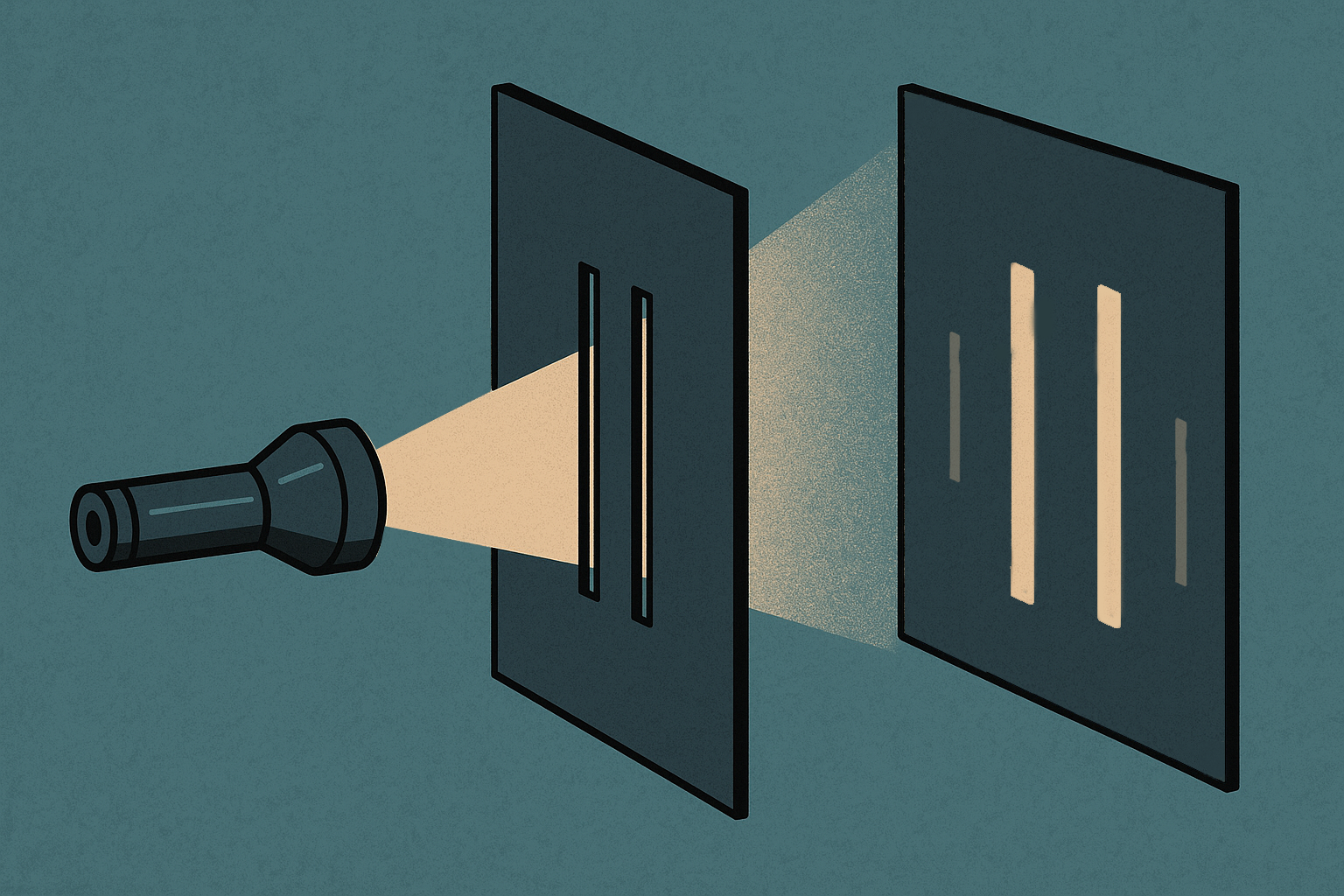
If light were made of just tiny particles (photons), you’d expect to see two bright spots behind the slits like the first image. But that’s not what happens. Instead, the light creates a series of bright and dark bands, like a barcode. This is called an interference pattern, and it only makes sense when light is behaving like a wave. The waves passing through both slits, overlap and cancel each other out in some places.

Now imagine you could send one tiny little photon of light at a time. Surely this would not have the interference problem because the photon has no other photons to bounce off of. But in the double slit experiment, this is what we see...
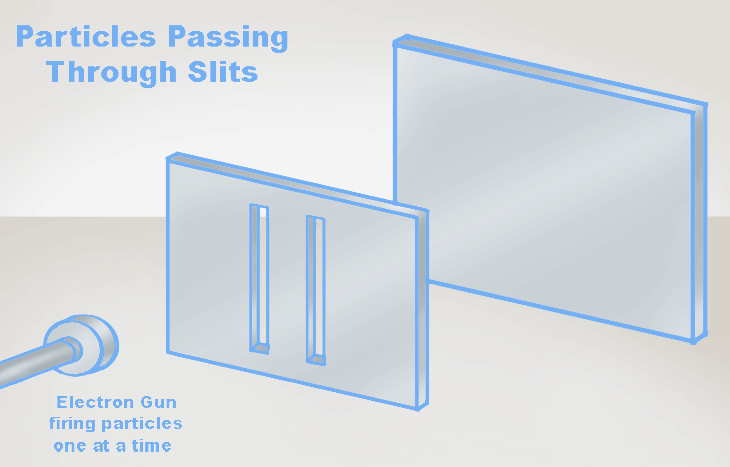
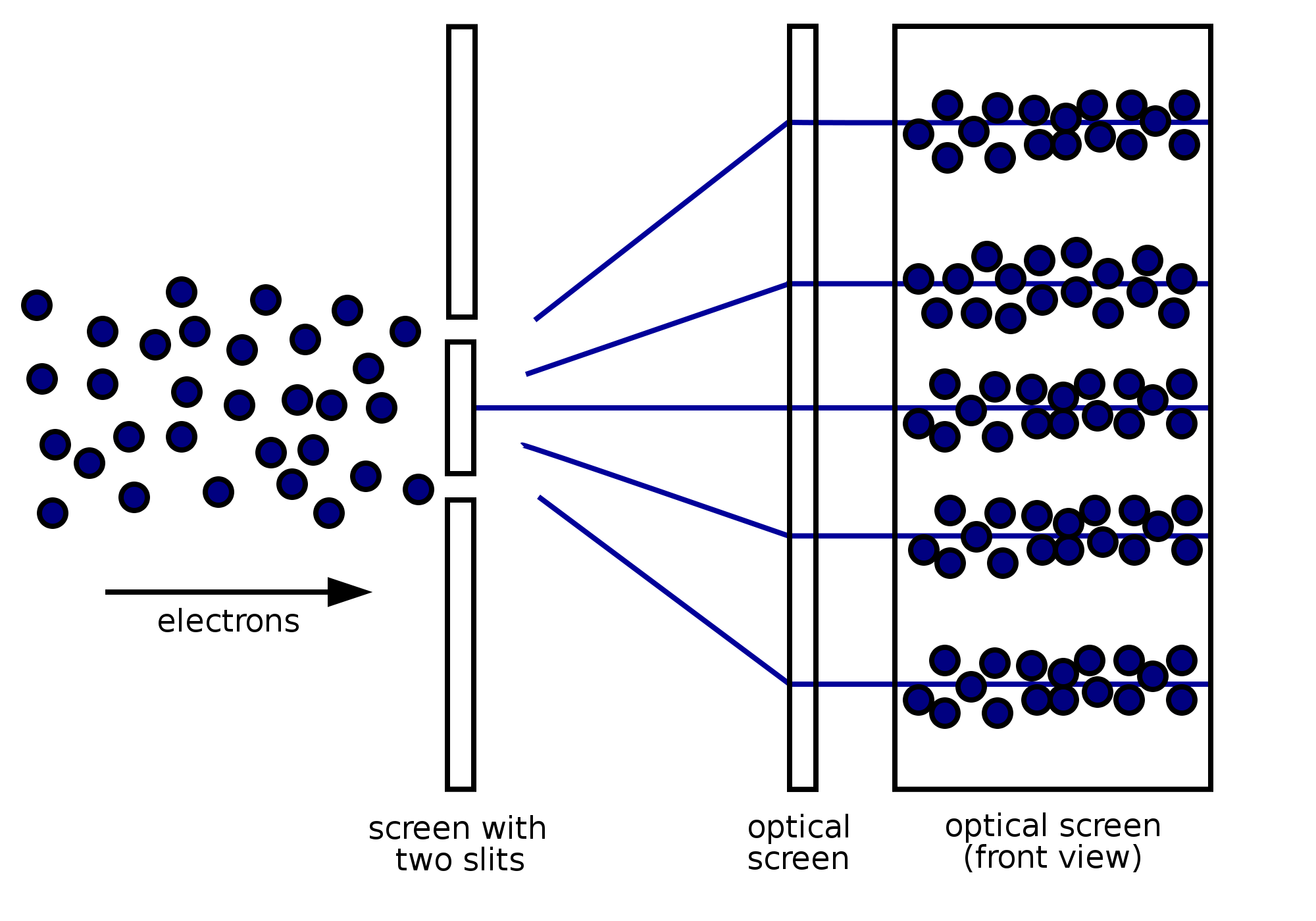
But how does this happen? It's as if each photon somehow split and went through both slits at once, interfering with itself and creating the same interference pattern. So the next logical thing to do was to observe when these photons split and create the pattern. This is where it gets super weird. When scientists built machines fast enough to track a single photon go through the slit, the interference pattern disappeared. Just us noticing it caused it to revert back to acting like a photon dots. When we stop observing it, the interference patterns returns and it acts like a wave with the interference pattern. In other words, just watching light changes the way light works.
